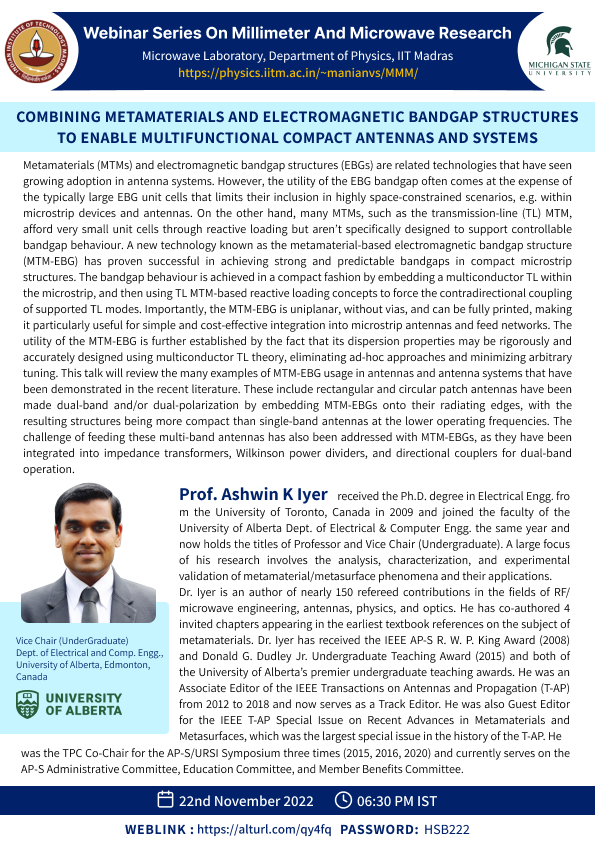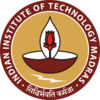Combining Metamaterials and Electromagnetic Bandgap Structures to Enable Multifunctional Compact Antennas and Systems

ABSTRACT :
Metamaterials (MTMs) and electromagnetic bandgap structures (EBGs) are related technologies that have seen growing adoption in antenna systems. However, the utility of the EBG bandgap often comes at the expense of the typically large EBG unit cells that limits their inclusion in highly space-constrained scenarios, e.g. within microstrip devices and antennas. On the other hand, many MTMs, such as the transmission-line (TL) MTM, afford very small unit cells through reactive loading but aren’t specifically designed to support controllable bandgap behaviour. A new technology known as the metamaterial-based electromagnetic bandgap structure (MTM-EBG) has proven successful in achieving strong and predictable bandgaps in compact microstrip structures. The bandgap behaviour is achieved in a compact fashion by embedding a multiconductor TL within the microstrip, and then using TL MTM-based reactive loading concepts to force the contradirectional coupling of supported TL modes. Importantly, the MTM-EBG is uniplanar, without vias, and can be fully printed, making it particularly useful for simple and cost-effective integration into microstrip antennas and feed networks. The utility of the MTM-EBG is further established by the fact that its dispersion properties may be rigorously and accurately designed using multiconductor TL theory, eliminating ad-hoc approaches and minimizing arbitrary tuning. This talk will review the many examples of MTM-EBG usage in antennas and antenna systems that have been demonstrated in the recent literature. These include rectangular and circular patch antennas have been made dual-band and/or dual-polarization by embedding MTM-EBGs onto their radiating edges, with the resulting structures being more compact than single-band antennas at the lower operating frequencies. The challenge of feeding these multi-band antennas has also been addressed with MTM-EBGs, as they have been integrated into impedance transformers, Wilkinson power dividers, and directional couplers for dual-band operation.
ABOUT THE SPEAKER:
Prof. Ashwin K. Iyer received the Ph.D. degree in electrical engineering from the University of Toronto, Canada in 2009. He joined the faculty of the University of Alberta Dept. of Electrical & Computer Engineering the same year and now holds the titles of Professor and Vice Chair (Undergraduate). He leads a team of talented graduate students in several areas of RF/microwave/millimeter-wave and antenna engineering. A large focus of his research involves the analysis, characterization, and experimental validation of metamaterial/metasurface phenomena and their applications.
Dr. Iyer was part of the pioneering effort at the University of Toronto in the early 2000s in developing metamaterials that exhibit a negative refractive index and demonstrating free-space subdiffraction imaging. He is an author of nearly 150 refereed contributions in the fields of RF/microwave engineering, antennas, physics, and optics, and he has co-authored 4 invited chapters appearing in the earliest textbook references on the subject of metamaterials.
Dr. Iyer has received the IEEE AP-S R. W. P. King Award (2008) and Donald G. Dudley Jr. Undergraduate Teaching Award (2015) and both of the University of Alberta’s premier undergraduate teaching awards. He was an Associate Editor of the IEEE Transactions on Antennas and Propagation (T-AP) from 2012 to 2018 and now serves as a Track Editor. He was also Guest Editor for the IEEE T-AP Special Issue on Recent Advances in Metamaterials and Metasurfaces, which was the largest special issue in the history of the T-AP. He was the TPC Co-Chair for the AP-S/URSI Symposium three times (2015, 2016, 2020) and currently serves on the AP-S Administrative Committee, Education Committee, and Member Benefits Committee.
Registration Link: https://forms.gle/JMwkPoruTFaxFUnY9
Link for Attendees: https://iitmadras.webex.com/iitmadras/j.php?MTID=m6d3b3a155427b9e043016a9f1a9ed151
Webinar Password: HSB222
Millimeter and Microwave Research Group, Microwave Laboratory, Department of Physics, IIT Madras is pleased to invite you to attend the Webinar.
